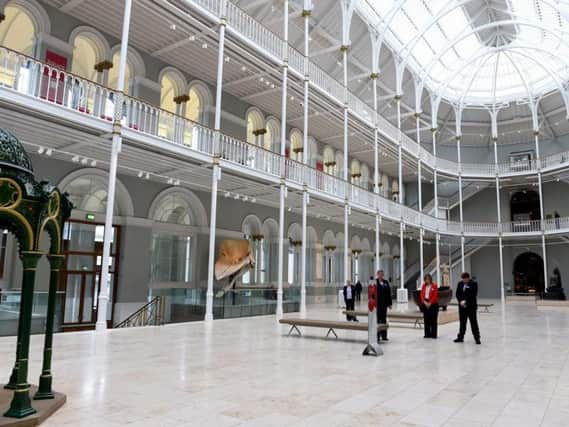Canadian Government demands return of First Nation skulls


Canada’s heritage minister Melanie Joly has sent a letter to the museums asking for the remains, of two of the last Beothuk people, to be returned to the country.
The remains - the skulls and burial objects of Nonosabasut and his wife Demasduit - were were discovered by a Newfoundland man in 1828 and brought to Scotland, where they are now kept in the collection centre at the Edinburgh museum.
Advertisement
Hide AdOttawa put the National Museums Scotland on notice last year that the Canadian government would be making a formal demand for repatriation.
The Canadian government said that provincial government leaders in Newfoundland, where the skulls were buried and five Indigenous nations sent letters to the minister confirming their support of the repatriation efforts.
A spokeswoman for the National Museums Scotland said the demand would be dealt with in line with the organisation's Human Remains Policy.
She said: “We have now received a formal request from the Canadian government for the repatriation of the Beothuk material currently held in the national collections. This will now be considered in line with our Human Remains in Collections Policy.”
It is believed that Nonosabasut was killed by John Peyton Jr and his men in 1819, while his wife was captured and later died of TB. The couple were the aunt and uncle of Shanawdithit, the last-surviving member of the Beothuk group, who died in 1829.
Native American campaigner Chief Mi’sel Joe, of the Miawpukek First Nation, has visited Edinburgh and seen the skulls, the removal of which he has previously compared to him travelling to Scotland to “dig up [the grave of] Burns”. He has led calls for the repatriation of the remains since 2015.
Advertisement
Hide AdIn an interview in 2015, he called for the skulls to be returned.
He said: “They were stolen, they were taken, they were grave robbing if you want to call it that, and it’s long overdue that they come back to where they belong.
Advertisement
Hide Ad“Maybe what I need to do is go and dig up [Robert] Burns, maybe that’ll open somebody’s eyes. I mean, what’s the difference in me going to dig up Burns and bringing him back to study in Newfoundland than them taking the remains of our people to study for all these years?”
It is thought the skulls were brought to Scotland by William Eppes Cormack in 1828 - a Canadian born to well-off Scottish parents, who had been educated in Edinburgh and Glasgow. Mr Cormack had an interest in studying and trying to preserve Native culture, founding the Beothick Institution in 1827, which he hoped would help him forge connections with the last remaining native groups.
The Canadian authorities hope that, if repatriated, the skulls will be held by The Rooms, a cultural facility and provincial museum in St John’s, Newfoundland.